Even well before our first ascent into the stars and more recent plans to explore the surface of Mars, humans have always been fascinated by space. For centuries we’ve gazed up at the stars in awe, pondering the vast galaxies beyond our borders, and the impact of spaceflight is obvious, appearing now in everyday conversation thanks to films and the billionaire space race.
If you think of yourself as an expert in space expeditions, or you’re simply a star-gazing enthusiast, consider naming your four-legged friend something space-inspired. The sky offers endless options for any pup; there’s no shortage of stellar celestial names for your new pooch!
Names of Real-Life Dogs in Space
Soviet space dogs traveled where man had yet to explore during the earliest days of space travel. Dogs and other living organisms stood in as live guinea pigs for people as the program worked toward eventual human spaceflight. Canine space cadets were generally mixed breed of dogs.
Plucked from the streets in the 1950s and 1960s, a few of these courageous canines had a tragic one-way mission, though several went on to survive and lead happy lives back on Earth.
Street dogs were preferred over house canines because of their scrappy nature and willingness to eat the less-than-palatable food offered during canine flight. All were female, as collecting a female dog’s waste was easiest during canine orbit and their temperaments worked best for the role.
Some of the real dogs who travelled in space include:
- Albina: Albina flew over 52 miles into the sky on a capsule before landing safely. The small mixed breed was considered for Sputnik 2, though another dog, Laika, ultimately made the fateful trip.
- Belka: Belka was a fox-like mixed breed who safely flew on Sputnik 5 in 1960 beside Strelka. Her name means “squirrel.”
- Dezik: Dezik was one of the first dogs to make sub-orbital flight in 1951. This small mixed-breed pup later passed during a subsequent mission.
- Laika: Laika was the first living creature to orbit Earth during her historic flight in 1957. This pint-sized mixed breed came from the streets of Moscow before she rode on the Sputnik 2 mission and marked a major step toward human spaceflight. Laika means “barker” and is pronounced LY-ka.
- Lisa: There were two little Lisas in the Soviet space program. Lisa-1 sadly perished in 1951 with Dezik, though Lisa-2 went on to rocket over 60 miles into the sky in 1954. Lisa means “fox.”
- Malyshka: Malyshka famously flew a mission with the escape artist Smelaya. Both dogs survived the flight. Malyshka means “little one.”
- Ryzhik: This red pooch flew over 60 miles into the sky to the edge of space beside Lisa-2 in 1954. Ryzhik means “red-haired” and is pronounced Ree-zsik.
- Smelaya: Smelaya gave Soviet space workers a run for their money when she ran off the day before her launch. She was later found and safely flew her mission. Her name means “brave.”
- Strelka: Strelka safety flew on Sputnik 5 in 1960. Her name means “little arrow.” Strelka went on the have puppies, one of which was given to President John F. Kennedy, who named her Pushinka, meaning “fluffy.”
- Tsygan: Along with Dezik, Tsygan was part of the first flight by dogs, surviving a sub-orbital journey. Tsygan was later adopted by a Soviet space researcher. Tsygan is pronounced SEE-gahn and means “wanderer.”
- Tsyganka: She was a small mixed-breed that rocketed over 50 miles into the sky and landed with her companion Albina, completing a successful mission. Tsyganka means “little wanderer” and is pronounced SEE-gahn-ka.
As dog lovers and firm believers in animal welfare, our hearts ache for the animals in space whose lives were lost during early space missions. Using a hero dog’s name shouldn’t come with sadness, however, as it’s a great way to honor a life and keep their memory alive.
Space Dog Names Inspired By Planets

If you rocket around our solar system or others, you’ll find a number of celestial bodies orbiting stars called planets. Planets make up a small but significant collection of potential space names for dogs.
- Ceres: Named after the Roman goddess of the harvest, this heavily-cratered dwarf planet is smaller than Earth’s moon. Ceres is the only dwarf planet found within the inner solar system, located between Mars and Jupiter in an asteroid belt.
- Earth: The Earth is the only planet in our solar system not named after a Greek or Roman God, and it is the only one that we know harbors life.
- Eris: Discovered in 2005, this dwarf planet is roughly the same size as Pluto, though found three times as far from the sun. Eris is named after the Greek goddess of discord, as its discovery led to Pluto’s demotion to a dwarf planet.
- Haumea: Named after the Hawaiian goddess of fertility, the dwarf planet Haumea has one of the fastest orbits in the solar system, with a day on its surface lasting a mere four hours!
- Jupiter: Jupiter is comprised mostly of gas, and as such is called a gas giant. It is an incredibly massive planet, being two and a half times larger than all of the other planets in the solar system combined. Being such a large and powerful planet, it was named for the Roman king of the gods.
- Mars: The planet Mars was named after the Roman God of war, and it’s appearance embodies Mars’ fiery attitude, thanks to its intense terrain and color. Mars contains the highest mountain in the solar system, as well as the largest dust storms.
- Mercury: Mercury is the smallest planet in the solar system, but it still has a lot going for it. It is the second hottest planet, Mercury likely contains a molten core. The name of the planet was inspired by the Roman messenger of the gods.
- Neptune: Neptune is the farthest planet from the sun in the solar system, and only one spacecraft has ever observed it up close. Neptune is famous for it’s beautiful blue color, which some think make it appear like a marble. The blue color is due to a thick layer of methane surrounding the planet.
- Pluto: Pluto used to be considered a planet, but in 2006, scientists implemented a new definition of the term “planet.” This new definition included three criteria a body must exhibit to be considered a planet. Pluto satisfied two of the criteria (it orbits the sun and is massive enough to have achieved a round shape), but it fails to satisfy the third criteria: clearing its orbital neighborhood. Accordingly, Pluto is now considered a dwarf planet.
- Saturn: Saturn is the sixth planet from the sun, and it’s the farthest planet that can be seen with the naked eye. Additionally, it has the most well-defined rings of any planet studied in the solar system. Saturn is a pale yellow color with sections of orange, and it’s color is even noticeable to trained eyes on Earth.
- Uranus: Well, this planet is everyone’s favorite because of how close it sounds to a certain phrase, but Uranus is still a cool namesake. Located seventh from our sun, Uranus is named after the Greek god of the sky and is a frigid, windy planet.
- Venus: Venus is named after the Roman Goddess of love and beauty, and it is the hottest planet in the solar system, thanks to its runaway greenhouse effect. It is sometimes considered Earth’s “sister planet,” as it has a number of things in common with our planet.
Exoplanets That Make Good Space Dog Names
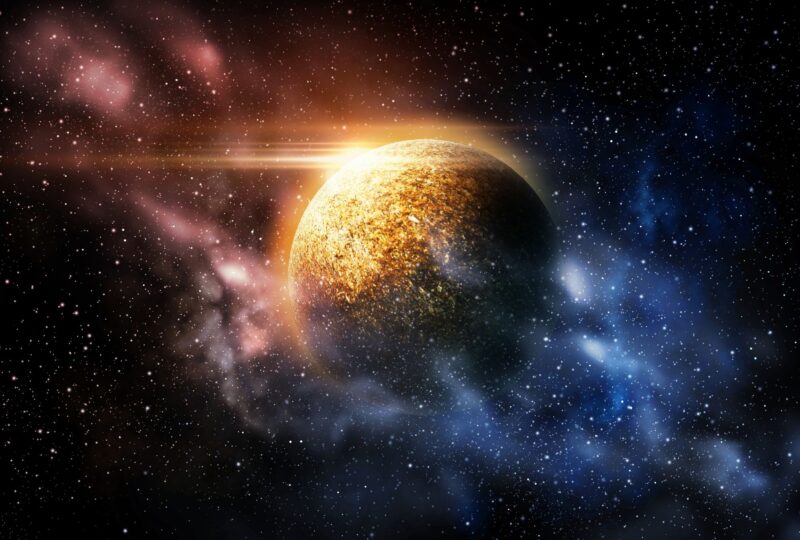
Exoplanets are planets located outside of our solar system. These are named by the International Astronomical Union and often get their namesakes from Earthly mountains and ancient gods.
- Agouto
- Alef
- Amateru
- Arion
- Asye
- Bélisama
- Bendida
- Bran
- Buru
- Chura
- Dagon
- Dulcinea
- Finlay
- Ganja
- Guarani
- Hairu
- Halla
- Harriot
- Janssen
- Jebus
- Kavian
- Khomsa
- Krotoa
- Madriu
- Mastika
- Meztli
- Naron
- Negoiu
- Neri
- Pollera
- Quijote
- Ramajay
- Saffar
- Sancho
- Sazum
- Sissi
- Tondra
- Xólotl
- Yvaga
Space Dog Names Inspired by the Sun
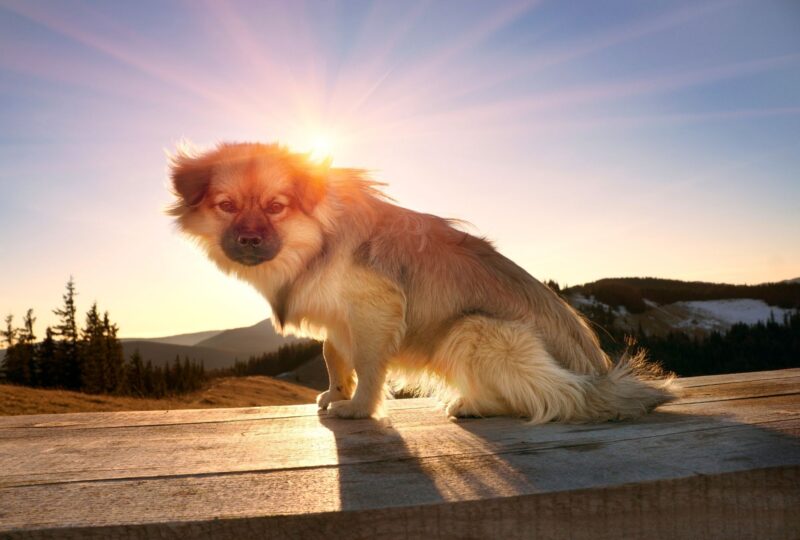
Few space names shine as brightly as those inspired by the sun. Check out these picks related to our galaxy’s star.
- Aarush (Hindu name meaning “ray of sunlight”)
- Aelia (Roman name meaning “sun”)
- Akycha (Inuit goddess of the sun)
- Amun-Ra (Egyptian god of sun)
- Ataru (Japanese name meaning “sunshine”)
- Azia (Greek name meaning “sunrise”)
- Beam (As in sunbeam)
- Corona (Outer layer of the sun)
- Eclipse (When the moon blocks Earth’s view of the sun)
- Elio (Italian name meaning “sun”)
- Etu (Native American name meaning “sun”)
- Flare (Eruption of energy from the sun)
- Hathor (Egyptian sun goddess)
- Helios (Greek god of the sun)
- Hinata (Japanese name meaning “sun”)
- Inti (Incan sun god)
- Langa (African name meaning “sun”)
- Rashmi (Indian name meaning “ray of light”)
- Ravi (Indian name meaning “sun”)
- Ray (Line of sunlight)
- Samson (Hebrew name meaning “sun”)
- Sol (Roman sun god)
- Solana (Spanish name meaning “sun”)
- Solar (General term that means “pertaining to the sun”)
- Solara (Latin name meaning “sun”)
- Solaris (Latin name meaning “of the sun”)
- Soleil (French for “sun”)
- Solfrid (Norse name meaning “beautiful sun”)
- Solstice (When the sun is the farthest and closest to Earth’s poles)
- Sonne (“Sun” in German)
- Sulwyn (Welsh name meaning “sun blessed”)
- Sun (Earth’s star)
- Sunlight
- Sunny (Perfect on a golden retriever)
- Sunshine
- Surya (Hindu sun god)
- Tapati (Hindu sun goddess)
- Utu (Sumerian god of the sun)
- Youta (Japanese name meaning “sun”)
- Zon (Dutch for “sun”)
Space Dog Names Related to Moons
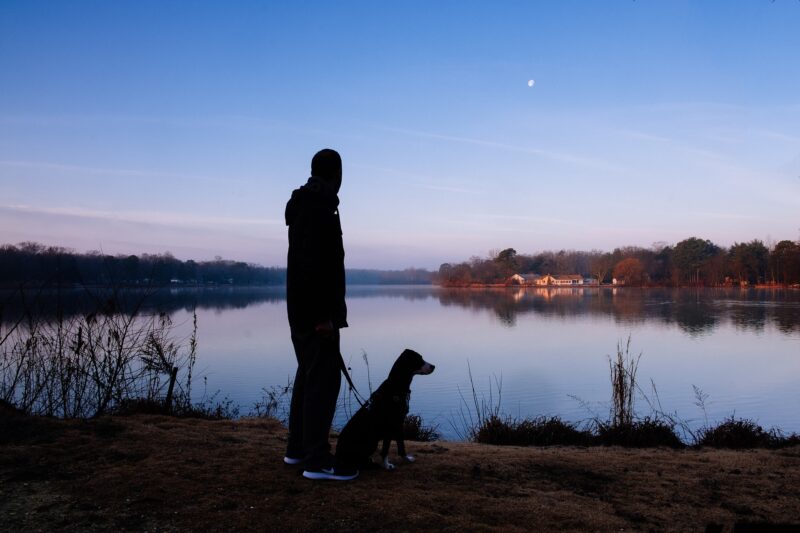
Moons are natural satellites of a planet. Earth only has one, while other planets can have loads. Check out these mighty moon names that might fit your doggo.
- Amalthea (A moon from Jupiter)
- Artemis (Greek goddess of the moon)
- Callisto (One of Jupiter’s moons)
- Carme (Moon from Jupiter)
- Chandra (Hindu moon god)
- Charon (One of Pluto’s moons)
- Cressida (Moon from Uranus)
- Deimos (One of Mars’ moons)
- Despina (One of Neptune’s moons)
- Diana (Roman goddess of the moon)
- Dione (One of Saturn’s moons)
- Elara (A moon from Jupiter)
- Europa (Moon from Jupiter)
- Hyperion (A moon from Saturn)
- Igaluk (Inuit moon god)
- Jericho (Arabic name meaning “city of the moon”)
- Khonsu (Egyptian moon god)
- Luna (Latin name meaning moon)
- Lunette (French name meaning “little moon”)
- Mahsa (Persian name meaning “like the moon”)
- Mimas (One of Saturn’s moons)
- Moon (Earth’s only natural satellite)
- Oberon (A moon from Uranus)
- Nereid (One of Neptune’s moons)
- Perdita (Moon from Uranus)
- Phobos (Moon from Mars)
- Puck (One of the moons from Uranus)
- Selene (Greek name meaning “moon”)
- Qamar (Arabic name meaning “moon”
- Stephano (Moon from Uranus)
- Thebe (One of Jupiter’s moons)
- Titan (Moon from Saturn)
- Titania (A moon from Uranus)
- Triton (One of Neptune’s moons)
- Tsukiko (Japanese name meaning “moon”)
- Umbriel (Moon from Uranus)
- Yamir (Indian name meaning “moon”)
Space Dog Names Inspired By Constellations
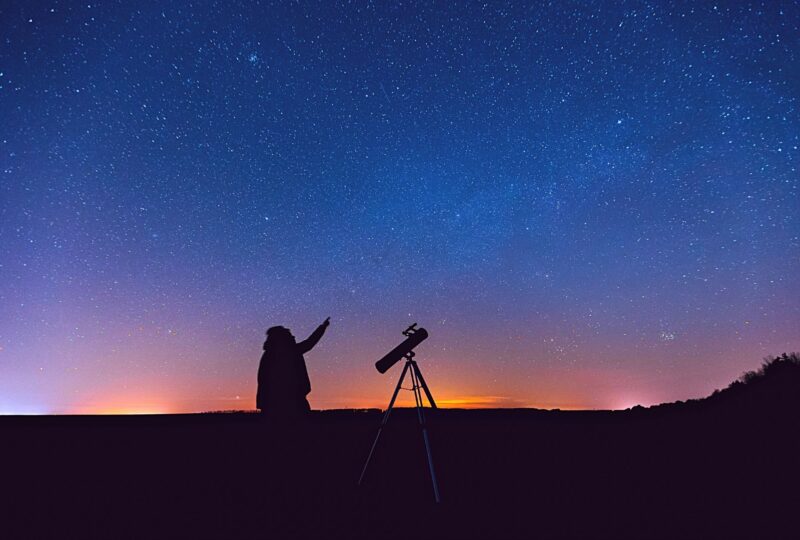
Constellations are groups of stars that trace various shapes in the sky. The stars in constellations are often unthinkably far from each other, but from our viewpoint on Earth, they can appear as though they’re in the same stellar “neighborhood.”
- Andromeda: Andromeda is “the chained woman” constellation located north of the celestial equator.
- Antlia: This “pump” constellation is located in the Southern Celestial Hemisphere.
- Apus: Located in the southern sky, this constellation means “without feet.”
- Aquarius: Aquarius is one of the most famous constellations, although it is generally quite hard to see. The name means “water-bearer”, and its shape is of a man carrying a large jug of water.
- Aquila: Aquila is also known as “the eagle,” as its shape is that of an eagle with outstretched wings.
- Ara: This southern constellation is known as “the altar.”
- Aries: Aries is a well-known constellation due to its relation to zodiac significance. It is the shape of a charging ram and is comprised of relatively dim stars.
- Auriga: Located north of the celestial equator, this constellation is known as “the charioteer.”
- Boötes: The “herdsman” is in the northern sky.
- Caelum: Known as “the chisel,” Caelum is a distant constellation in the southern sky.
- Canis Major: “The Greater Dog” constellation is found in the Southern Celestial Hemisphere.
- Capricornus: This “horned goat” is located in the southern sky.
- Carina: Known as “the keel of the ship,” you can find Carina in the southern sky.
- Cassiopeia: Cassiopeia is a constellation that can be best viewed during the fall and winter. This mythical dog name refers to a queen who sits upon a chair in the sky. She appears in the shape of a large, flattened “W” spread across the sky.
- Cepheus: Named for the mythological Greek king, Cepheus is found in the northern sky.
- Cetus: This constellation in the northern sky is known as “the whale.”
- Columba: Called “the dove,” this faint constellation is located in the southern sky.
- Corvus: This “crow” is in the southern sky.
- Crux: Found in the southern hemisphere, Crux is shaped like a cross.
- Cygnus: Cygnus is drawn in the shape of a swan, but appears in the sky in the form of a cross. Due to the cross shape, this constellation is also known as the “Northern Cross” and is visible on late summer evenings.
- Delphinus: “The dolphin” constellation is found in the Northern Celestial Hemisphere.
- Dorado: This small “dolphinfish” constellation can be spotted in the south.
- Draco: Known as “the dragon,” you can catch Draco in the far northern sky.
- Equuleus: This “little horse” can be found in the northern sky.
- Gemini: Called “the twins,” Gemini is located in the northern sky.
- Hercules: Named for the Greek mythological hero, Hercules is in the northern sky.
- Hydra: The largest of the modern constellations, Hydra is “the sea serpent” found in the southern sky. Hydra is also the longest constellation.
- Lacerta: Called “the lizard,” Lacerta is in the northern sky.
- Leo: Leo is one of the most well-known constellations, and it generally does look like what it was named for: a lion. Leo is most visible in late April and May.
- Libra: Found in the southern sky, Libra is known as “justice’s scales.”
- Lupus: Latin for “wolf,” Lupus is located in the southern sky.
- Lynx: Named for the animal, Lynx is found in the northern sky.
- Lyra: Lyra is in the shape of a harp, and is based on a Greek myth about Orpheus and his love for a beautiful woman named Eurydice. The legend states that Orpheus’ harp was placed into the sky following his death.
- Mensa: This “table mountain” can be found in the Southern Celestial Hemisphere.
- Norma: Known as “the level,” Norma is a found in the southern sky.
- Orion: Orion is formally known as Orion The Hunter, and can be easily spotted by his well-known “belt” made up of three bright stars. He is shaped like a man brandishing a sword and shield.
- Pavo: This “peacock” constellation can be found in the southern sky.
- Pegasus: Named after the mythical winged horse, this constellation is found in the northern sky.
- Perseus: The story of Perseus follows a young man who saved a beautiful woman from a sea monster. He is formally known as Perseus the Hero, and the brightest star in his constellation, Alpha Persei, is actually brighter than the North Star.
- Phoenix: Named after the mythical bird, this minor constellation can be found in the southern sky.
- Pictor: This “painter” is found in the Southern Celestial Hemisphere. A great choice for a spotted doggo like a Dalmatian.
- Pisces: Known as “the fishes,” you can find this constellation in the Northern Celestial Hemisphere.
- Pyxis: This “mariner’s compass” is located in the southern sky and is quite faint.
- Sagittarius: Known as “the archer,” this constellation is found in the southern sky.
- Scorpius: This “scorpion” constellation is found in the Southern Celestial Hemisphere.
- Taurus: The stars that make up Taurus the bull form the “V” of his horns, and the star in his eye is visibly red.
- Tucana: Named after the toucan bird, this constellation is found in the southern sky.
- Vela: Found in the southern sky, the constellation Vela means “the ship’s sail.”
- Virgo: Known as “the maiden,” Virgo is the second-largest constellation in the sky. Virgo is also the largest constellation in the zodiac.
Star Inspired Space Dog Names
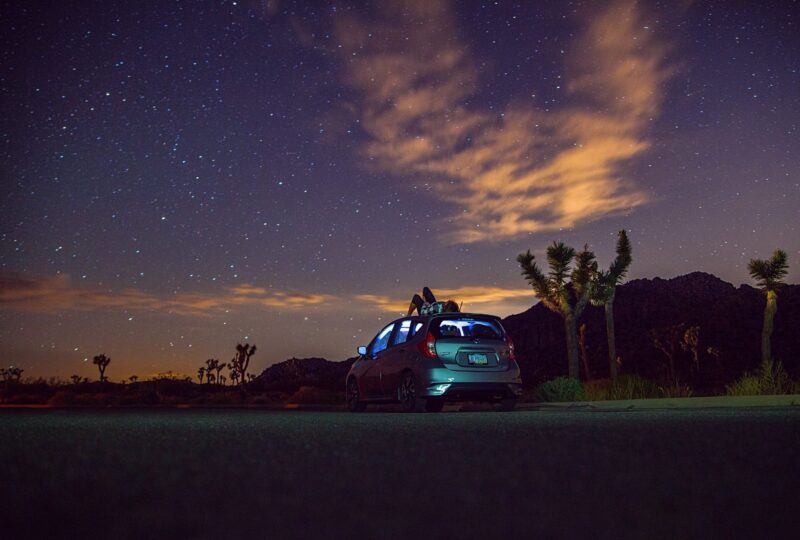
Capture your dog’s star power with these star-themed names. From the well-known to the unfamiliar, they come in all sorts of styles.
- Acrux (Star in the constellation Crux)
- Alhena (Star in the constellation Gemini)
- Alkaid (Star in the constellation Ursa Major)
- Ancha (Star found in the constellation Aquarius)
- Aster (English name meaning “star”)
- Asteria (Greek name meaning “starry”)
- Astin (French name meaning “starlike”)
- Astraeus (Greek god of stars)
- Atlas (Star located in the constellation Taurus)
- Azha (Star in the constellation Eridanus)
- Bellatrix (Star in the constellation Orion)
- Castor (Star found in the constellation Gemini)
- Danica (Slavic name meaning “morning star”)
- Estelle (French name meaning “star”)
- Esther (Hebrew name meaning “star”)
- Estrella (Spanish name that means “star”)
- Fulu (Star found in the constellation Cassiopeia)
- Gudja (Star located in the constellation Serpens)
- Hadar (Star found in the constellation Centaurus)
- Hoku (Hawaiian name meaning “star”)
- Ira (Polynesian night goddess and mother of stars)
- Izar (Basque word for “star”)
- Kraz (Second brightest star in the constellation Corvus)
- Maia (Star located in the constellation Taurus)
- Meissa (Star found in the constellation Orion)
- Merga (Star in the constellation Boötes)
- Mira (Star found in the constellation Cetus)
- Najima (Arabic word for “star”)
- Naos (Star in the constellation Puppis)
- Nembus (Star located in the constellation Andromeda)
- Nunki (Star found in the constellation Sagittarius)
- Ogma (Yellow giant star located in the constellation Hercules)
- Polaris (Also known as the North Star, found in Ursa Minor)
- Pollux (Star located in the constellation Gemini)
- Sadr (Star found in the constellation Cygnus)
- Seren (Welsh name meaning “star”)
- Sirius (Brightest star in the sky, found in Canis Major)
- Star
- Starla (English name meaning “star”)
- Starlight
- Stella (Latin name meaning “star”)
- Supernova (Massive explosion, the “death” of a star)
- Talitha (Star found in Ursa Major)
- Tiaki (Brightest star in constellation Grus)
- Vega (Brightest star found in the constellation Lyra)
- Xing (Chinese name meaning “star”)
- Zaniah (Star found in the Virgo constellation)
- Zhang (Star located in the constellation Hydra)
- Zosma (Star located in the Leo constellation)
Comet Inspired Dog Names
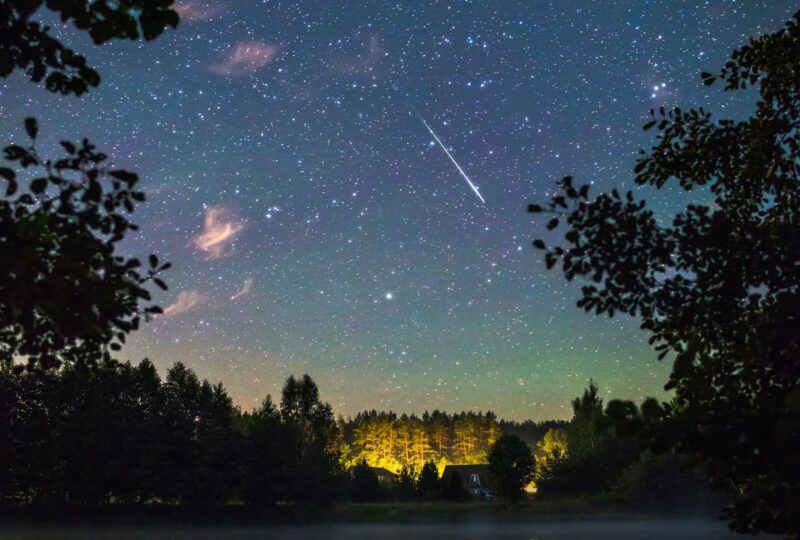
Comprised of rock and ice, comets are sun-orbiting masses sometimes called the “dirty snowballs” of the universe. While we don’t think any dog wants to be called a dirty snowball, we do think some comet names make cool mutt monikers.
- Bennett: This comet last appeared in the 1970s and won’t be seen again until the year 3600.
- Borisov: This famous comet was the first rogue comet ever observed.
- Comet: This one’s a given and would work great on an agility dog that flies through the course.
- Donati: Donati was the most brilliant comet of the 19th century.
- Hale-Bopp: The comet Hale-Bopp won’t return to the inner solar system again until the year 4385!
- Halley: Halley’s comet is one of the most famous comets and can be seen once every 75 to 76 years.
- Hartley: This small comet’s orbit lasts 2,358 days — not too long compared to many others!
- Holmes: Holmes was at one point the largest object in the Solar System.
- McNaught: This comet was named after astronomer Robert H. McNaught, who also discovered it.
- Thatcher: Thatcher is a long-period comet that won’t return to our neck of the woods until roughly the year 2283.
Astronaut-Themed Dog Names
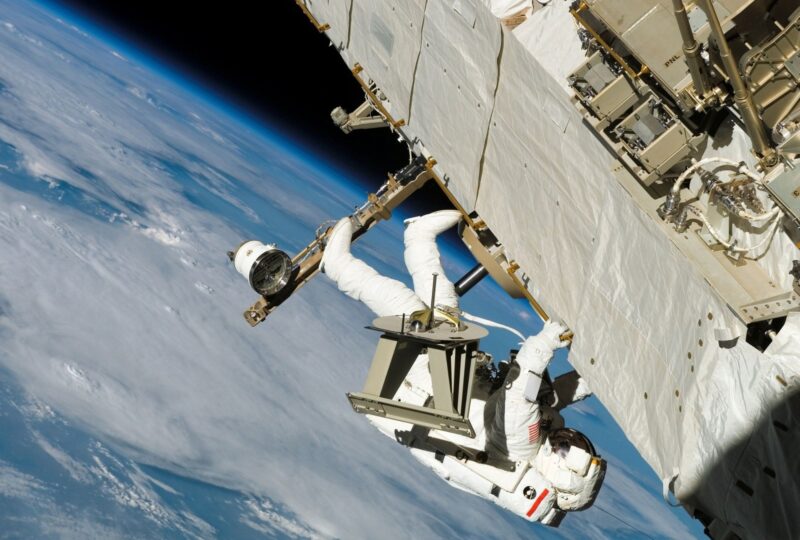
These brave explorers have gone where few have gone before, making them awesome name associations for your courageous pooch. Here are some great astronaut-inspired dog names.
- Armstrong: Neil Armstrong was the first man to walk on the moon in the year 1969. His mission consisted of a whopping 8 days in space from start to finish, lasting from July 16 to July 24.
- Astronaut: Meaning “space sailor” in Greek, the occupation itself makes a cool mutt moniker.
- Buzz: As one of the first two humans on the moon, Buzz Aldrin is a well-known astronaut. There’s also an association with Buzz Lightyear, the fictional space ranger.
- Glenn: John Glenn was the third American in space and the first to orbit the Earth in 1962. He circled our planet three times during his orbital mission before returning safely.
- Mae: Mae C. Jemison was the first black woman in space aboard the shuttle Endeavor in 1992.
- Sally: Yet another woman in space, Sally Ride was the first American woman to travel to space on 1983’s Challenger shuttle.
- Shepard: Alan Shepard was the first American to to visit space in 1961 aboard Freedom 7.
- Valentina: How about one more woman in space? Valentina Tereshkova was the first woman to venture into space aboard 1963’s Vostok 6. It was a solo mission, and she remains the only woman to have ever completed a solo space mission as of 2022. She spent just under 3 days in orbit. Wow!
- Yuri: Russian astronaut Yuri Gagarin was the first human to venture to space back in 1961 aboard Vostok 1. He orbited Earth once before returning.
Space Names for Dogs Inspired By Astronomers
Astronomers are scientists of astronomy, studying everything from asteroids to black holes. If you’d like a less common space moniker for your pooch, check out these astronomers for inspiration.
- Annie (Annie Jump Cannon): An American astronomer instrumental in the development of modern stellar classification.
- Arago (Francois Arago): A French astronomer who was also a mathematician, physicist, and politician.
- Araki (Hiroshi Araki): A Japanese astronomer who discovered three different asteroids.
- Asami (Atsuo Asami): A Japanese astronomer who operates a small observatory near Tokyo.
- Baily (Francis Baily): An English astronomer who played a big role in the development of the Royal Astronomical Society.
- Boss (Lewis Boss): An American astronomer, best known for being the director of the Dudley Observatory in Schenectady, New York.
- Cassini (Giovanni Domenico Cassini): An Italian astronomer, who (among other things) discovered four of Saturn’s moons.
- Cecilia (Cecilia Payne-Gaposchkin): An American astronomer who was the first person to conclude that stars were primarily comprised of helium and hydrogen.
- Clyde (Clyde Tombaugh): The American astronomer who discovered Pluto (and therefore, the Kuiper Belt).
- Copernicus (Nicolaus Copernicus): The Renaissance-era astronomer who determined that the Sun – rather than Earth – was at the center of our solar system.
- Cuffey (James Cuffey): An American astronomer whose work involved measuring the intensity of the light emitted by stars.
- Da Vinci (Leonardo da Vinci): Famed Italian astronomer who also “dabbled” in art, architecture, and engineering, among other things.
- Felix (Felix Ziegel): A Soviet researcher who authored more than 40 popular works on astronomy.
- Galileo (Galileo Galilei): An Italian astronomer who revolutionized science, yet spent the end of his life under house arrest for championing the heliocentric model of the solar system.
- Harlow (Harlow Shapley): An American scientist who devised a way to estimate the size of the Milky Way and the position of the Sun within it.
- Henrietta (Henrietta Swan Leavitt): An American astronomer whose work revolved around cataloging the brightness of various stars.
- Herschel (William Herschel): A British astronomer and composer (weird combo, but OK), who studied binary star systems.
- Holden (Moses Holden): An English astronomer who was a professor and lecturer about various astronomy-related topics.
- Hubble (Edwin Hubble): An American astronomer famous for devising Hubble’s Law and being the namesake for the Hubble Space Telescope.
- Hussey (Thomas John Hussey): An English astronomer with a surprisingly famous social circle that included Charles Darwin.
- Hypatia (Hypatia of Egypt): An Egyptian philosopher, astronomer, and mathematician, who was murdered by a mob in 415 AD.
- Jenkins (Louise Freeland Jenkins): An American astronomer who studied star parallax and catalogued many of the stars close to the Sun.
- Jocelyn (Jocelyn Bell Burnell): An Irish scientist who discovered the first radio pulsars in 1967.
- Kaiser (Franz Kaiser): A German astronomer who studied asteroids and discovered 21 of them for the first time.
- Kepler (Johannes Kepler): A German astronomer, philosopher, and composer who improved the design of refracting telescopes.
- Mitchell (Maria Mitchell): An American astronomer, naturalist, librarian, and educator who was the first woman elected Fellow of the American Academy of Arts and Sciences and the American Association for the Advancement of Science.
- Newton (Isaac Newton): Some guy who got hit on the head with an apple and changed science forever (the apple thing is actually said to be a myth by some historians).
- Patry (Andre Patry): A French astronomer who discovered nine minor planets in the 1930s.
- Ptolemy (Claudius Ptolemy): An ancient Greek astronomer who also made huge contributions to the fields of mathematics, geography, and music theory.
- Qingde (Qingde Wang): A modern astronomer who teaches at the University of Massachusetts Amherst and studies interstellar and intergalactic mediums.
- Riddle (Edward Riddle): An English astronomer and mathematician who helped devise navigational techniques for sailors.
- Rigaux (Fernand Rigaux): A Belgian astronomer who
- Russell (Henry Chamberlain Russell) In 1951, he co-discovered the periodic comet 49P/Arend-Rigaux, along with his colleague Sylvain Arend.
- Sabine (Edward Sabine): An Irish astronomer, explorer, and ornithologist who was the 30th president of the Royal Society. He established a collection of magnetic observatories around the world.
- Spitzer (Lyman Spitzer): An American astronomer who’s work revolved around star formation and plasma physics, he also proposed the idea of using telescopes that are deployed in space.
- Tousey (Richard Tousey): An American astronomer, Tousey took the first ever photographs of the Sun’s ultraviolet spectrum.
- Tycho (Tycho Brahe): An Astronomer from Denmark, Brahe was best known for the extremely accurate observations of the heavens he made.
- Vera (Vera Rubin): Most famous for her work involving the rate at which galaxies rotate, Rubin was an American astronomer who championed the contributions of other women to astronomy.
- Watson (James Craig Watson): Not to be confused with the James Watson who co-discovered the helical nature of DNA, James Craig Watson was a Canadian-born astronomer who discovered several comets and minor planets.
- Whipple (Fred Lawrence Whipple): An American astronomer, Whipple was the first to propose the “dirty snowball” theory of comet composition.
- Witt (Carl Gustav Witt): A German astronomer who discovered two comets during the course of his career.
- Zwicky (Fritz Zwicky): A Swiss astronomer, most famous for proposing the existence of dark matter.
Space Names for Dogs From Television and Film
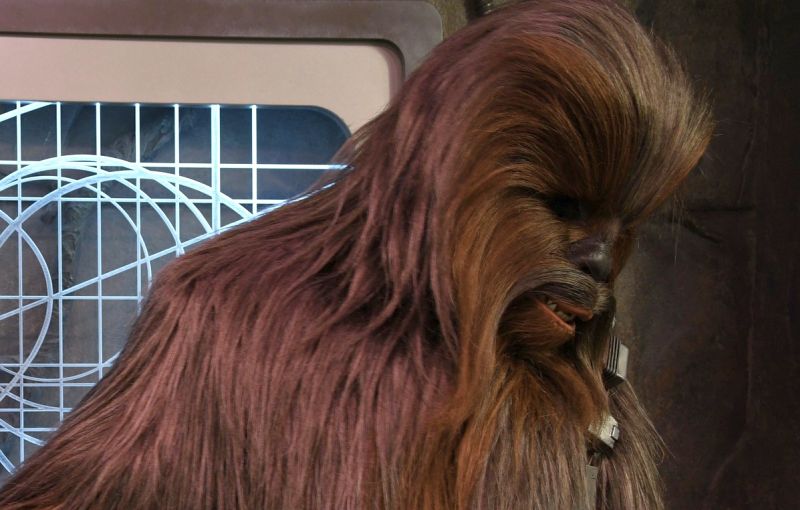
Space travel is popular on the big screen, providing endless adventure and intrigue. If you look to film and television, you’ll find loads of awesome space names for dogs.
- Alf (ALF)
- Anakin (Star Wars)
- Ash (Alien)
- Atreides (Dune)
- Barbarella (Barbarella)
- Bender (Futurama)
- Betty (Atomic Betty)
- Boba (Star Wars)
- Captain Kirk (Star Trek)
- Chani (Dune)
- Chekov (Star Trek)
- Chewbacca (Star Wars)
- Cloyd (Rocky and His Friends)
- Darth Vader (Star Wars)
- Drax (Guardians of the Galaxy)
- Drekk (Men In Black)
- Dutch (Predator)
- Ellie (Contact)
- E.T. (The Extra Terrestrial)
- Ewok (Star Wars)
- Frank (Men in Black)
- Gamora (Guardians of the Galaxy)
- Gazoo (The Flintstones)
- Gidney (Rocky and His Friends)
- Groot (Guardians of the Galaxy)
- Han Solo (Star Wars)
- Hawk (Space Cowboys)
- Hiller (Independence Day)
- Jawa (Star Wars)
- Jedi (Star Wars)
- Jeebs (Men in Black)
- Kang (The Simpsons)
- Kenobi (Star Wars)
- Kessler (Mars Attacks!)
- Klaatu (The Day the Earth Stood Still))
- Kodos (The Simpsons)
- Kylo (Star Wars)
- Leia (Star Wars)
- Lucy (Lucy In the Sky)
- Mace (Star Wars)
- Marvin (Looney Tunes)
- McCoy (Star Trek)
- Na’vi (Avatar)
- Neytiri (Avatar)
- Nibbler (Futurama)
- Nyota (Star Trek)
- Obi (Star Wars)
- Padmé (Star Wars)
- Predator (Predator)
- Rey (Star Wars)
- Ripley (Alien)
- Roger (American Dad)
- Scooter (Fly Me To the Moon)
- Scotty (Star Trek)
- Skywalker (Star Wars)
- Spock (Star Trek)
- Stitch (Lilo & Stitch)
- Sully (Avatar)
- Sulu (Star Trek)
- Thanos (Guardians of the Galaxy)
- Tsu’tey (Avatar)
- Venom (Venom)
- Vulcan (Star Trek)
- Wookiee (Star Wars)
- Worf (Star Trek)
- Yoda (Star Wars)
- Yondu (Guardians of the Galaxy)
- Zim (Invader Zim)
- Zoidberg (Futurama)
Space Terminology & Tool Inspired Dog Names
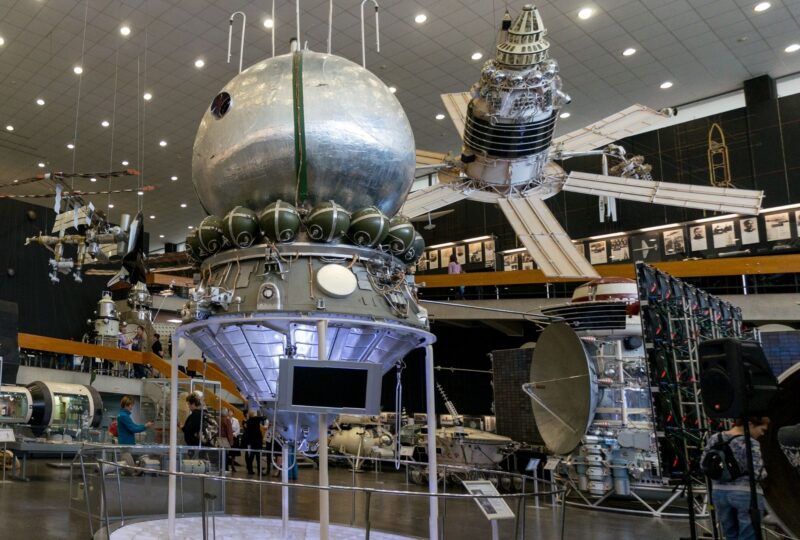
Lovers of cute and quirky pet names may enjoy monikers inspired by space tools, terminology, and missions.
- ACE: ACE stands for Advanced Composition Explorer. Launched in 1997, this NASA device is still circulation today, providing solar wind information.
- Apollo: This NASA program resulted in the first ever moonwalk.
- Aqua: This satellite program aims to learn more about Earth’s water sources.
- Ares: Ares was an early NASA launch vehicle.
- Astro: The Astro observatory launched via shuttle, and through a system of telescopes, gathered information in 1990.
- Barlow: Barlow is a specialized telescope lens.
- CHAMP: CHAMP stood for Challenging Mini-satellite payload, referring to a 2000 mission to map Earth’s gravity.
- CINDI: Standing for Coupled Ion Neutral Dynamic Investigation, this satellite is currently in orbit, collecting information about Earth’s atmosphere.
- Clementine: This spacecraft rocketed to the moon in 1994.
- DART: This acronym for Double Asteroid Redirection Test is designed to help protect Earth from asteroids.
- EVA: Also known as extravehicular activity, this is any activity done outside of the rocket or space module while beyond Earth’s atmosphere.
- Falcon: This is a semi-reusable launcher made by SpaceX.
- Genesis: This NASA mission helped gather information about planets.
- Jet: A jet is generally a small aircraft powered by small jet engines.
- Juno: This early line of rockets was designed to carry light loads into orbit.
- Kennedy: The Kennedy Space Center in Florida is where NASA’s rockets launch.
- Launchpad: This platform is where rockets take off.
- Magellan: This unmanned mission collected information about Venus.
- Mariner: The unmanned Mariner mission gathered invaluable information about Mars.
- NASA: NASA is the name of the famous American space agency that was responsible for placing the first man on the moon in 1969.
- Odyssey: Launched in 2001, this mission gathered information about Mars.
- Phoenix: Phoenix not only refers to a fiery mythical bird, but is also the name of a spacecraft that was sent to Mars.
- Ranger: This 1961 mission’s goal was to collection information about the moon.
- Redstone: This launch vehicle was used in the 1960s.
- RHESSI: This mission’s aim was to learn more about the sun.
- Rocket: A rocket is a vehicle designed to take satellites or humans into space.
- Rosetta: Launched in 2004, this mission rocketed to a comet, seeking to learn more about the space phenomenon. It didn’t land on the comet until 2014!
- SOHO: The goal of SOHO is to learn about the sun from the inside out. Crazy!
- Sputnik: Meaning “satellite” in Russian, Sputnik was the first man-made Earth satellite.
- Tang: This orange powder drink saw a surge in popularity after it was included along with other food in space for astronauts.
- TRACE: TRACE was a satellite sent to study the sun’s activity in the 1990s.
- Ulysses: Ulysses was a satellite sent to gather information about solar winds, magnetic fields, and more.
- Viking: These NASA probes went to Mars in the 1970s and 1980s.
- VIPER: This upcoming mission will send a robot to the moon.
- Voyager: Voyager is an ongoing mission consisting of two probes set to space to study the far reaches of our galaxy.
Other Space Themed Dog Names
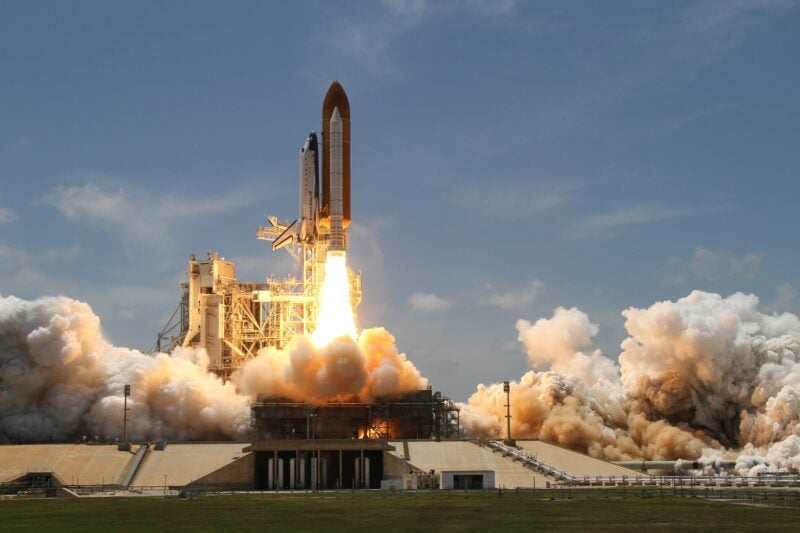
Outer space is full of countless named objects with a diverse mix of monikers.
- Achilles
- Alien
- Altair
- Alula
- Arecibo
- Ariadne
- Ariel
- Ascella
- Asteroid
- Astra
- Aurora
- Beatrix
- Belinda
- Bertha
- Calypso
- Camilla
- Capella
- Carpo
- Celestial
- Ceto
- Chaos
- Chasma
- Cielo
- Circe
- Cordelia
- Cosmic
- Cosmo
- Cosmos
- Crater
- Cuno
- Daphne
- Dawn
- Dia
- Eleanora
- Ersa
- Flora
- Force
- Freia
- Gaia
- Galatea
- Galaxy
- Gamma
- Gravity
- Halo
- Helene
- Hermes
- Hermione
- Hestia
- Hilda
- Juliette
- Kale
- Kalliope
- Klotho
- Kuiper
- Larissa
- Leda
- Leto
- Linus
- Lo
- Logos
- Lucina
- Maja
- Makemake
- Martian
- Meteor
- Milky Way
- Minerva
- Miranda
- Namaka
- Nebula
- Nestor
- Neutron
- Nibiru
- Niobe
- Nix
- Nova
- Nysa
- Oort
- Ophelia
- Orbit
- Pandora
- Phoebe
- Pioneer
- Pomona
- Portia
- Quadrant
- Quasar
- Remus
- Rhea
- Rigel
- Rosalind
- Sagitta
- Sedna
- Sergeant
- Shadow
- Sky
- Starburst
- Stardust
- Styx
- Sylvia
- Tesla
- Twilight
- Twinkle
- Typhon
- Ursa
- Ursula
- Varuna
- Vesta
- Zaurak
- Zenith
- Zodiac
Space-Related Words in Other Languages
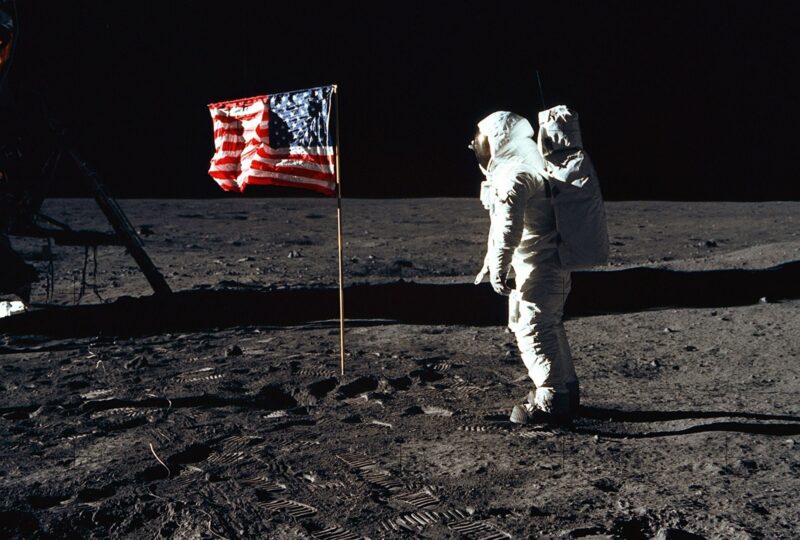
An easy way to find cool, uncommon dog names related to space and other interests is to look for words in other languages. Check these out.
- Bana: Swedish word for “orbit”
- Cohete: Spanish word for “rocket,” pronounced co-heh-tay
- Fāshè: Chinese word for “launch,” pronounced fa-SHUH
- Fusée: French word for “rocket,” pronounced foo-zee
- Ginga “Galaxy’ in Japanese
- Lua: Portuguese word for “moon”
- Lune: “Moon” in French
- Nebo: Bosnian for “sky”
- Razzo: Means “rocket” in Italian
- Reisen Means “travel” in German
- Resa Word for “travel” in Swedish
- Sora: Japanese word for “sky”
- Spazio: “Space” in Italian
- Sporbraut: “Orbit” in Icelandic
- Stern: “Star in German)
- Sunce: Means “sunshine” in Croatian, pronounced SOON-say
- Zapusk: Meaning “launch” in Ukrainian, pronounced ZA-poosk
- Zirka: Word for “star” in Ukrainian, pronounced ZEER-ka
***
Well, there you have it! More than 500 names that’d be perfect for a pup who wouldn’t mind spending a day in space.
Do you have any other clever ideas for space-themed dog names? Did we miss any important celestial names that’d work for a canine? Share your picks in the comments!
Also make sure to check out our articles on:
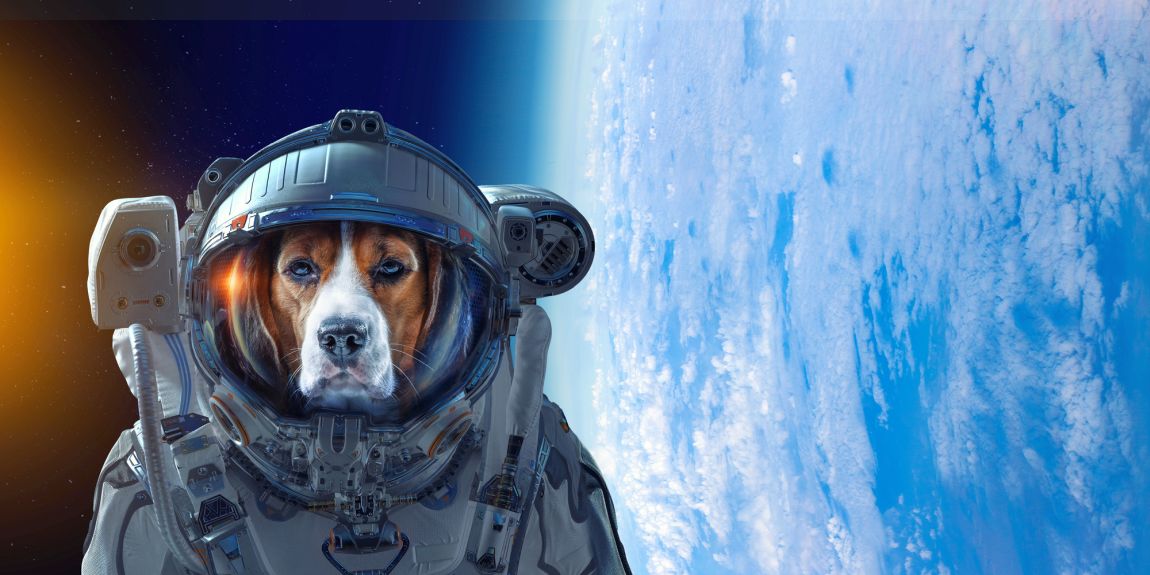



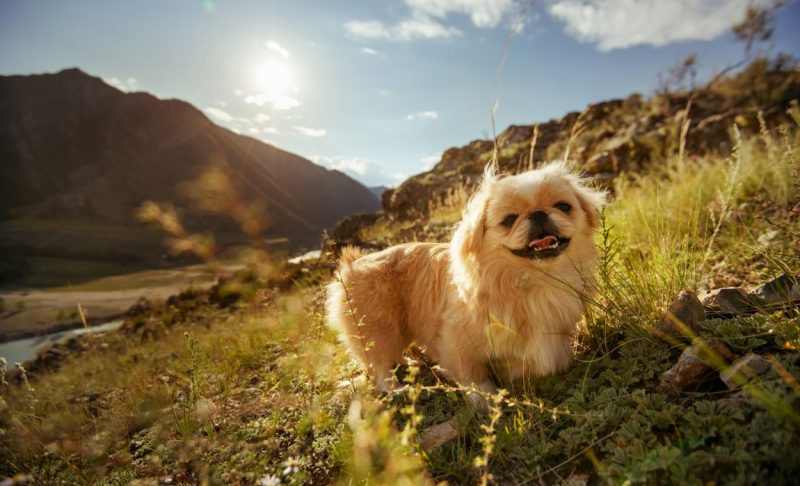
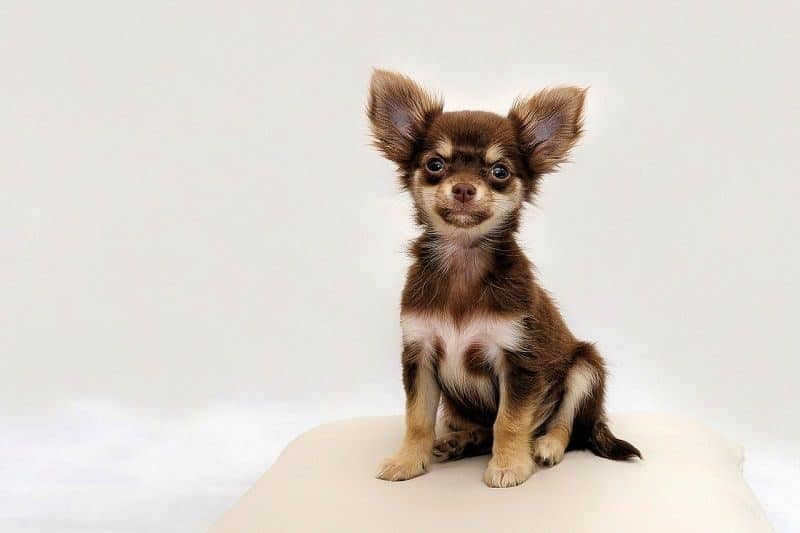
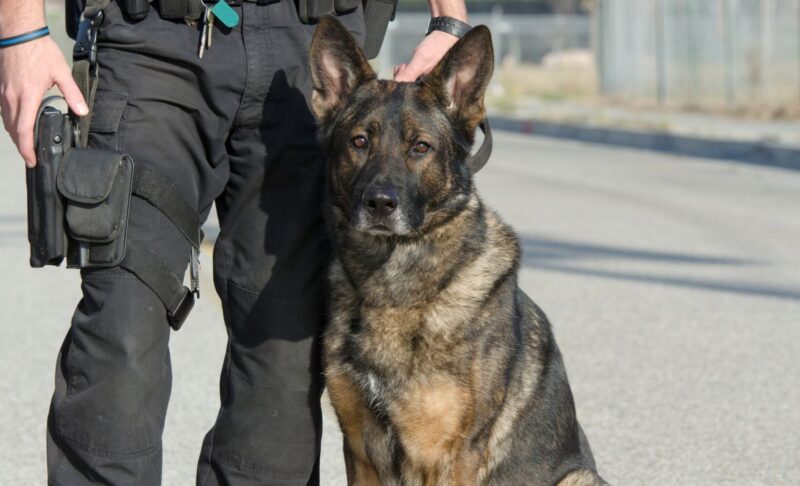

Leave a Comment